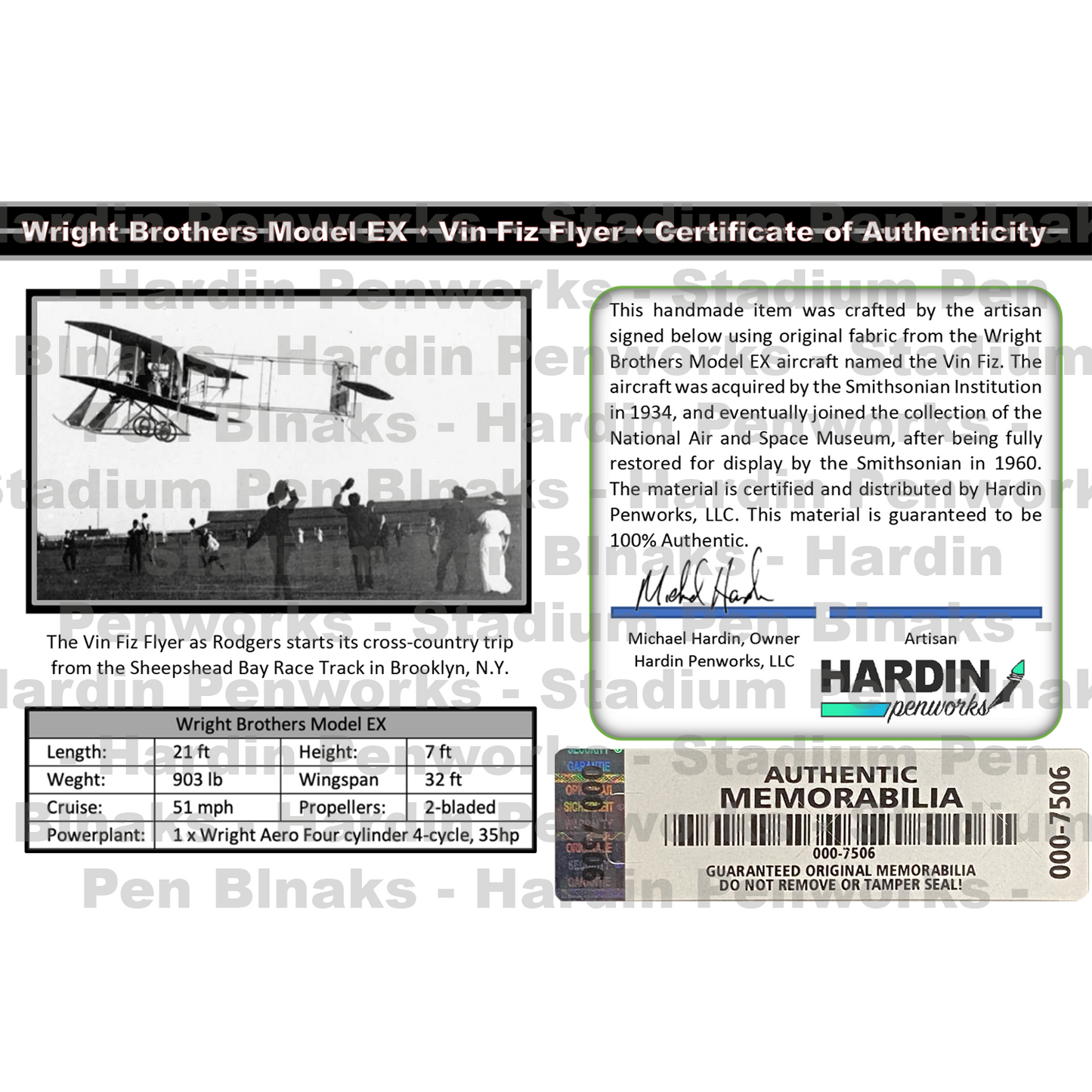Wright Brothers Model EX - Vin Fiz Flyer
Wright Brothers Model EX - Vin Fiz Flyer
Prodcut Base price with no add-on options
Low stock: 1 left
Product Price with any add-on options selected
Couldn't load pickup availability
Embedded blanks with original wing fabric from the Wright Brothers Model EX - Vin Fiz Flyer material.
All blanks will come with one COA per blank.
COAs are 4" x 6" card stock with foil COA seal.
The Vin Fiz Flyer was an early Wright Brothers Model EX pusher biplane that became the first aircraft to fly coast-to-coast across the U.S. The first crossing of the United States by airplane was achieved by Calbraith Perry Rodgers in 1911.

In 1910, publishing magnate William Randolph Hearst announced his offer of a $50,000-prize for a U.S. transcontinental flight in thirty days or less. Rodgers' Wright EX biplane was named the Vin Fiz after his sponsor's grape soda product. He left Sheepshead Bay, NY, on September 17, 1911. A "hangar" car, a rolling workshop filled with spare parts to repair and maintain the airplane, followed along. The flight was broken up by numerous stops, delays, and accidents. When Hearst's 30-day time limit expired, Rodgers had only reached Kansas City, MO, but Rodgers was determined to complete his flight whether he received the prize money or not. He arrived in Pasadena, CA, 49 days after setting out from NY. Although Pasadena was the official end of the coast-to-coast journey, Rodgers flew on to Long Beach to complete the flight at the shore of the Pacific Ocean. The total distance covered was 4,321 miles in 82 hours and 4 minutes total flying time at an average speed of 51.5 mph.
In addition to the Vin Fiz endorsement, Rodgers’ wife Mabel Rodgers used the flight to promote an airmail service. She sold special 25-cent postage stamps for items to be carried on the airplane. They were semi-official and while the Post Office tolerated them, they insisted that mail carry regular stamps as well.
The aircraft was acquired by the Smithsonian Institution in 1934, and eventually joined the collection of the National Air and Space Museum, after being fully restored for display by the Smithsonian in 1960. The material is certified and distributed by Hardin Penworks, LLC. This material is guaranteed to be 100% Authentic.
Share










